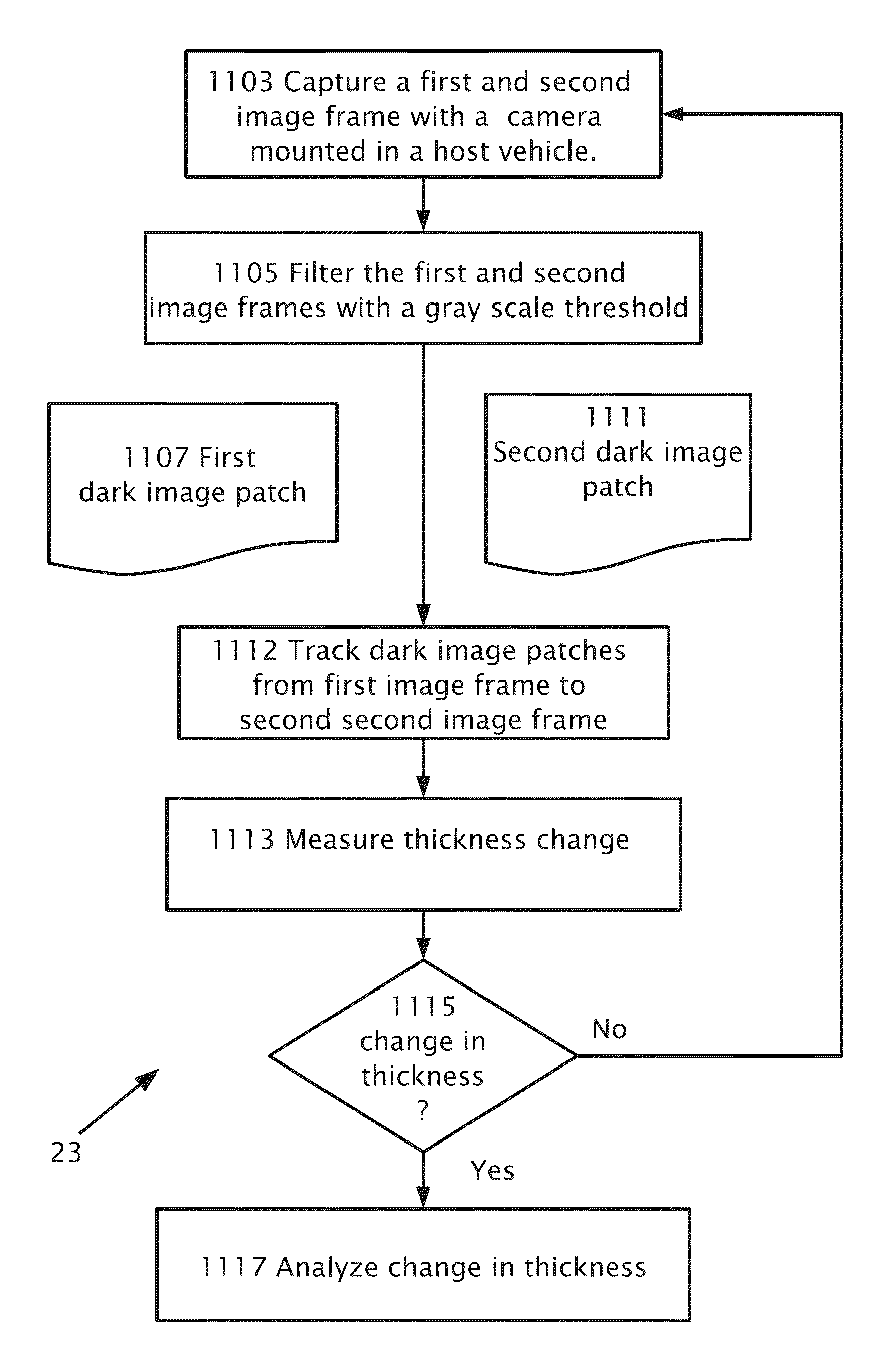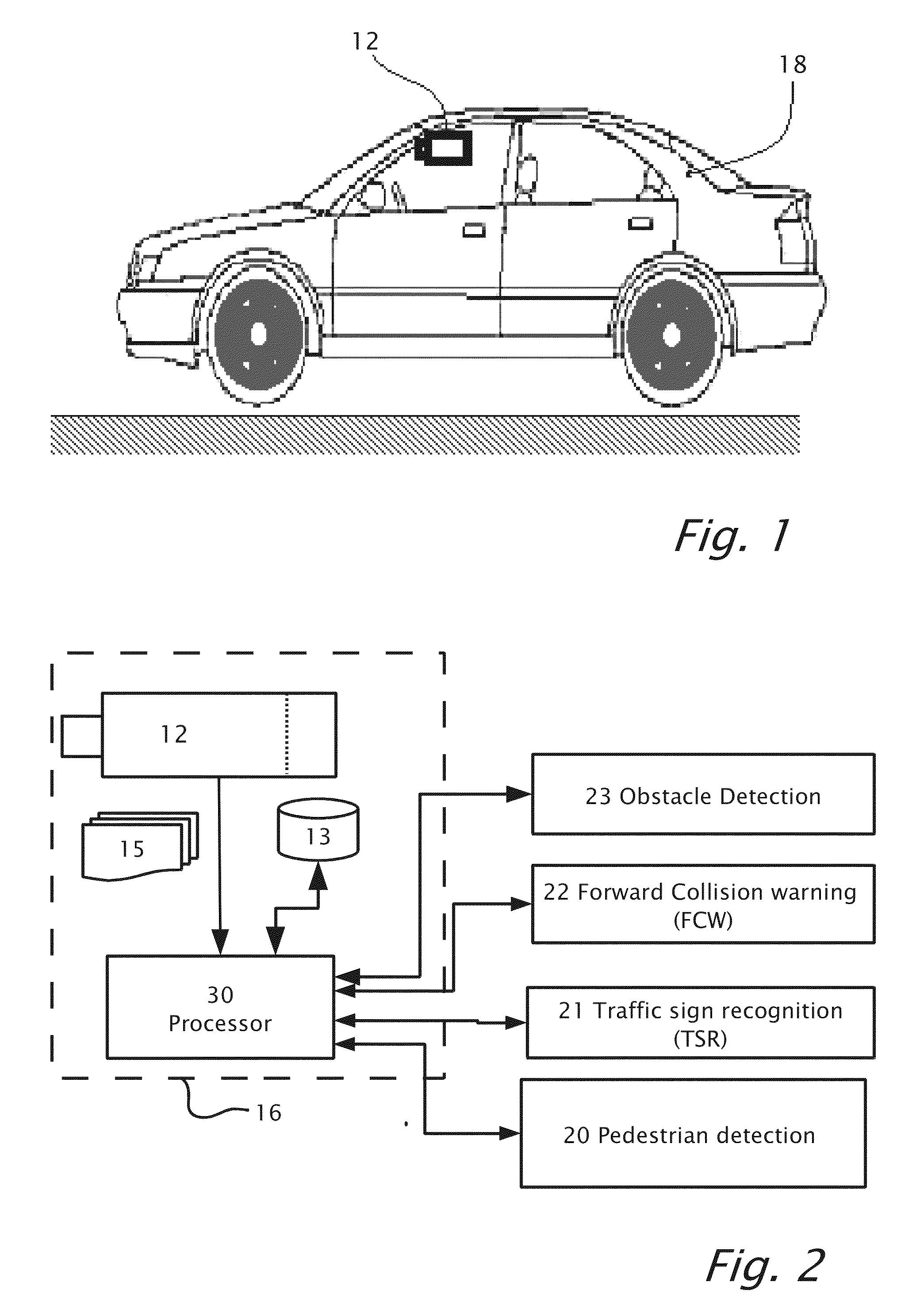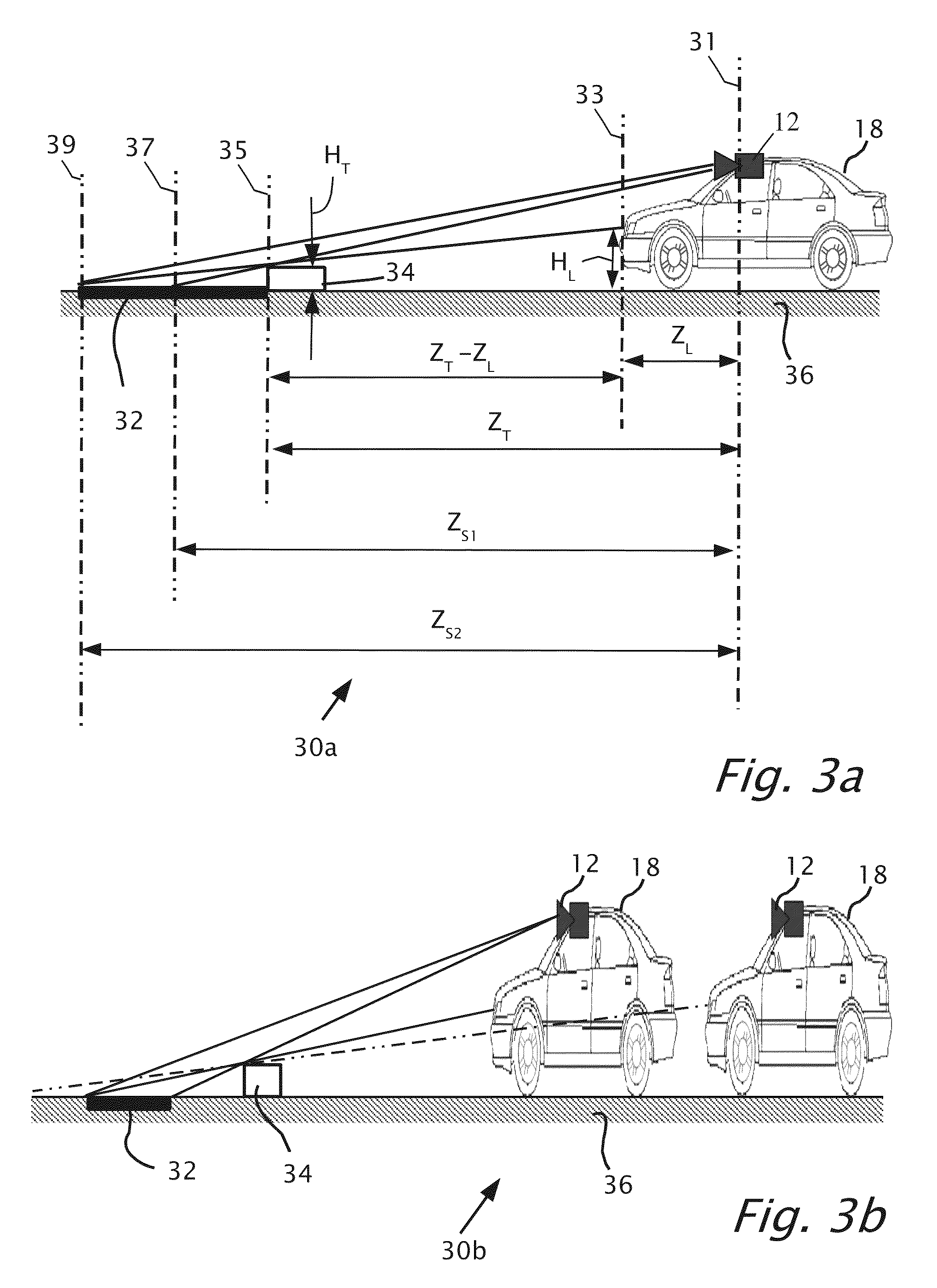Detection of obstacles at night by analysis of shadows
a shadow edge and obstacle detection technology, applied in the field of driver assistance systems, can solve the problems of only available depth information on the shadow edge, limited detection range of drop-offs,
- Summary
- Abstract
- Description
- Claims
- Application Information
AI Technical Summary
Problems solved by technology
Method used
Image
Examples
numerical example
[0070]Reference is now made to FIG. 7 which shows a graph 70 for a simulation, according to a feature of the present invention. Graph 70 plots two curves, one for a patch or road mark (dotted line) and one for a shadow strip (solid line). The thickness of the patch or shadow strip is in pixels versus range to obstacle in meters (m). The simulation has camera 12 mounted in a Renault Megane II where HC=1.25 m, HL=0.73 m and obstacle of height HT=0.1 m. A shadow will appear just over 2 pixels thick at 50 m. At 25 m the shadow will double in size to about 4 pixels. A road mark on road at 25 m will quadruple in size to 8 pixels.
[0071]Note that at a certain close distance (≈5 m) the tangent line of the headlight and of the camera 12 coincide. After passing 5 m the size of the shadow patch decreases rapidly.
[0072]Referring back to FIGS. 3a and 3b, FIGS. 3a and 3b show a step edge drop. The step edge drop is typical for a pot hole, road edge and steep speed bump. With the step edge drop, th...
PUM
 Login to View More
Login to View More Abstract
Description
Claims
Application Information
 Login to View More
Login to View More - R&D
- Intellectual Property
- Life Sciences
- Materials
- Tech Scout
- Unparalleled Data Quality
- Higher Quality Content
- 60% Fewer Hallucinations
Browse by: Latest US Patents, China's latest patents, Technical Efficacy Thesaurus, Application Domain, Technology Topic, Popular Technical Reports.
© 2025 PatSnap. All rights reserved.Legal|Privacy policy|Modern Slavery Act Transparency Statement|Sitemap|About US| Contact US: help@patsnap.com



